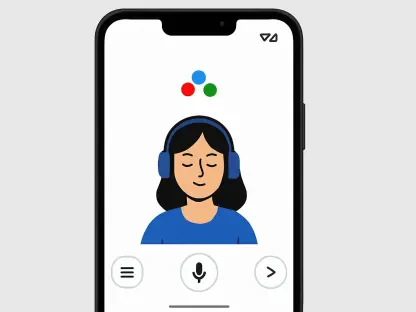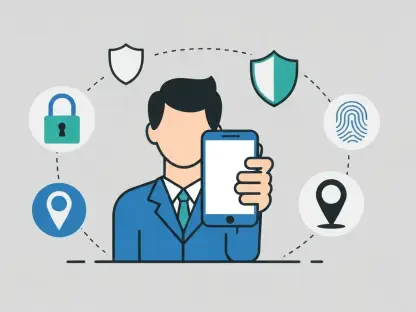Listen to the Article
The mobile app industry is constantly evolving, with new technologies and design trends changing the way people interact with their devices. This year, several new trends will probably revolutionize the industry, offering improved functionalities, enhanced user interaction, and greater accessibility for most users.
Mobile apps are no longer just utility tools; they are a part of everyday life, changing the way people around the world communicate, shop, and spend their free time. However, this means that consumer expectations continue to rise, and B2B developers must keep up with the times. The trends towards AI-powered voice assistants, hyper-personalization, and immersive augmented reality experiences are changing the digital landscape and making apps better.
On the other hand, more people want simple phones with no distractions. This leads to basic, “dumb” phones making a strong comeback by attracting those wanting a calmer life. Meanwhile, mobile design is also changing, moving towards a clear, strong look. This makes reading and using apps easier. These changes are not just transforming mobile apps — they’re changing the way people use technology. Here are the key mobile app trends for 2025.
Large Language Models Voice Assistants
According to Forbes, one of the biggest changes in mobile development is how AI assistants keep getting better and better by using Large Language Models. When Apple made Siri smarter by employing Apple Intelligence and Google mixed Gemini with Android, it really started to change how people interact with their phones.
These AI versions help voice assistants get better at understanding and interacting with users. Novelties like ChatGPT’s Advanced Voice Mode are making it feel more like talking to a real person than to a robot. Now, people can tell their phones exactly what to do, get ideas just by interacting with these new voice assistants, and even get answers that are in touch with their emotional intelligence. As these Large Language Models are improving voice assistants, they are also changing the way customers use their phones.
Personalized User Experiences Across the Web
Now, many apps and websites make user experience key. Basic sites cannot hold the users’ interest for long, and the same is true for mobile apps and platforms. So, customizing apps now matters more than ever. According to Graphem Solutions, mobile apps will employ AI to create very personal experiences this year. These new AI-powered apps will provide users with recommendations, tips, and personalized alerts to satisfy their wants and needs.
AI and other new technologies can be used to personalize user experiences in multiple ways:
Personalized settings that allow users to change interfaces as they like;
Algorithms look at users’ activity to make recommendations;
Personalized alerts that can be fun, not annoying.
Personalized apps come with multiple advantages, but the most important are that these new apps can actually help users. This, in turn, makes customers happy with the app and less likely to replace it.
Augmented Reality and Virtual Reality
Augmented Reality and Virtual Reality are not just futuristic ideas anymore. These technologies are already changing mobile app development. In 2025, new cloud XR technology will allow people to use augmented reality and virtual reality apps even without costly gear. According to Saigon Technology, around 54.1% of users will use these new technologies this year, making it one of the most important trends to consider.
Augmented reality and virtual reality will undoubtedly transform some sectors:
Games: Mobile games use both augmented reality and virtual reality apps like Google Cardboard were among the first to employ them, but new apps will go even further.
Retail: Augmented reality allows people to see how products look in a certain setting even before buying them. New technologies like LiDAR can make the experience better, taking online shopping to the next level.
Virtual worlds: More and more people now use metaverse platforms for entertainment, shopping, and socialization.
Traditional Phones
Although people now rely on their smartphones more than ever, some want simpler, “not-so-smart” phones. They may be tired of too many features, and they hope to use their phones just for calls, texts, and other simple activities.
These phones can actually help those who hope to return to simpler times reduce their online presence, as well as users looking for safer phones. They also have longer battery lives, provide users with more privacy, and have less data loss risk if the devices in question are stolen or broken.
As B2B tech companies keep developing new apps with AI and other new technologies, they should consider that there is a call for simple phones too. This shows a need for balance in the industry — letting people choose between powerful devices and basic phones that allow them to maintain their digital detox habits.
Minimalist Aesthetic With Strong Touches
The drive for clean, easy-to-use designs has made simplicity an important trend in mobile app development. In 2025, top apps will have a minimalist, straightforward look that keeps things clear, but they will also use strong accents for significant features.
Simple design is more than a good look — it makes the app easier to use, and it also improves the user experience. This is precisely why B2B developers are now using:
Easy-to-read fonts with strong titles and clear letters to simplify reading;
Minimalist designs that eliminate unnecessary elements that could otherwise distract users;
Strong colors to draw attention to key features;
Dark mode for easier reading and more comfort.
By adopting a minimalist aesthetic, B2B mobile developers can make sure their apps look good and easy to use.
Final Thoughts
2025 will be an important year for the B2B mobile industry, with new technologies changing how apps are developed. From voice assistants and augmented and virtual reality technologies to traditional phones making a comeback, these trends show how the industry is constantly evolving.
For B2B developers, staying on top of these transformations means being ready to change strategy and keep making new apps with new features. By using AI and augmented and virtual reality technologies, personalizing user experiences across the web, and keeping the design simple, developers can make better apps this year.









